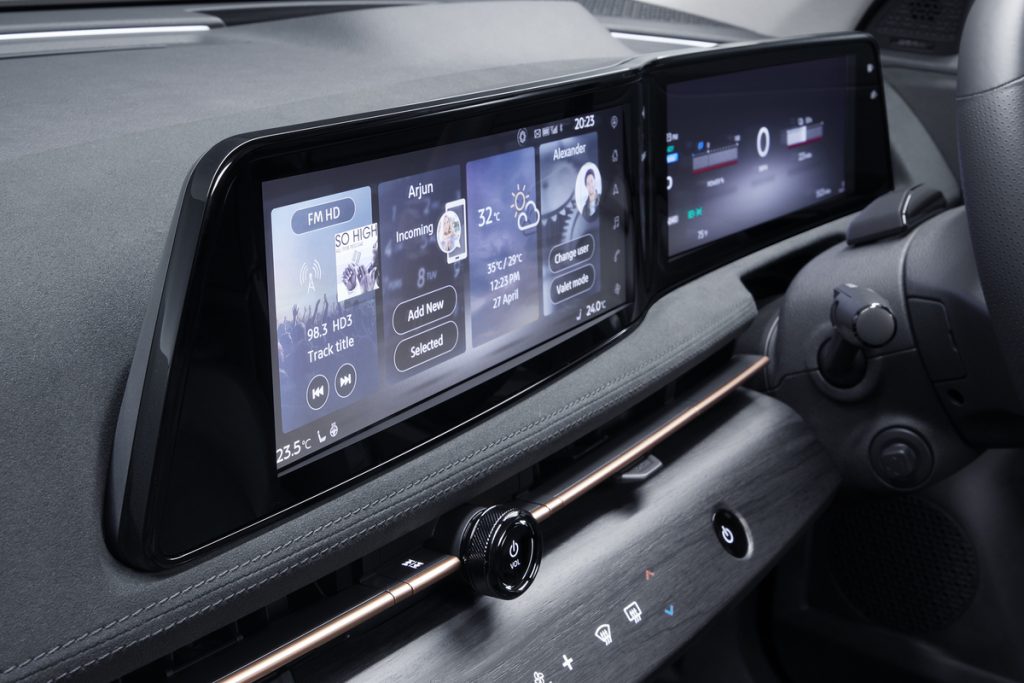Nissan Ariya – The next big step for Nissan
Not set to see the roads for almost an entire year, the Ariya has broken its covers to show Nissans approach to a mid-sized electric SUV, and the future of electrification. The Leaf has been around for a long time, and Nissans competitors have both caught up and passed the lead that Nissan had in the electric department. It does matter if you are first, but you have to continue developing, and the Ariya seems to be huge step forward.
Is it to futuristic, to simple, to aggressive? The questions are many, but the answers are only in the eyes of the beholder. In person, it is quite pleasant to look at with its smooth lines.
The interior looks unlike any other Nissan currently on sale. Ultra-simplistic with the classic digital gauge cluster and infotainment screen layout. No gearbox means a lot of extra space, and you really notice that inside. The two glove compartments were very flimsy and the infotainment system did not work, which is because of that this particular car is an ultra pre-production version. Although, it will be interesting to see if they actually improve the glove box.
All in all, the Ariya is Nissan’s new flagship model. The more luxurious side of Nissan. Will it be a flop or gain a cult like following? Only time will tell. But from the hour I had poking around, I have high hopes, but that does not matter one bit unless it delivers decent numbers. Range, charging speeds and so on.
There are quite a lot of combinations. Front wheel drive or four wheel drive, called E-Force, which Nissans claims to be the same as the one from the GT-R, yeah. Two different battery options (63 and 87 kWh) and five different power options (218-394 hp). In the end, there are five different models to choose from, all with different ranges (300-500 km). Instead of simplicity, Nissan goes for getting a car that can precisely suit your needs, although with a risk of overcomplicating things.
To charge the car, there is the classic domestic, one phase, plug with up to 2,3 kW of power, taking 37 hours to charge with the 87 kWh battery, yikes. The mode 3 cable with a wall box gives 7,4 kW for the 63 kWh battery, taking almost 9 hours to charge. You can check out to charge with 22 kW, which will then take 3 hours. For the 87 kWh battery, 22 kW is the only option, and will then take 4 hours. This is optimal charging times, remember that. Nissan has apparently chosen to not go for peak charging power, but to have the specified power be as consistent as possible. CCS is chosen for quick charging, with up to 130 kW. Mathematically, it should take 40 min to charge, but taking the longest range, largest battery Ariya, together with Nissans claimed 300 km in 30 min, becomes 50 min for a full charge.
The price levels are between just above 50 thousand and just under 70 thousand euros, taking a broad market, but the competition is fierce. The Ariya is definitely in the higher part of the mid-sized suv market, with the VW ID.4 and the Skoda ENIYAQ being more than 5 thousand euros cheaper as the base version, and almost 10 thousand euros more fully optioned, with similar range, Nissan needs to deliver something more with the Ariya. Maybe the Mach-E is the closer competitor?












